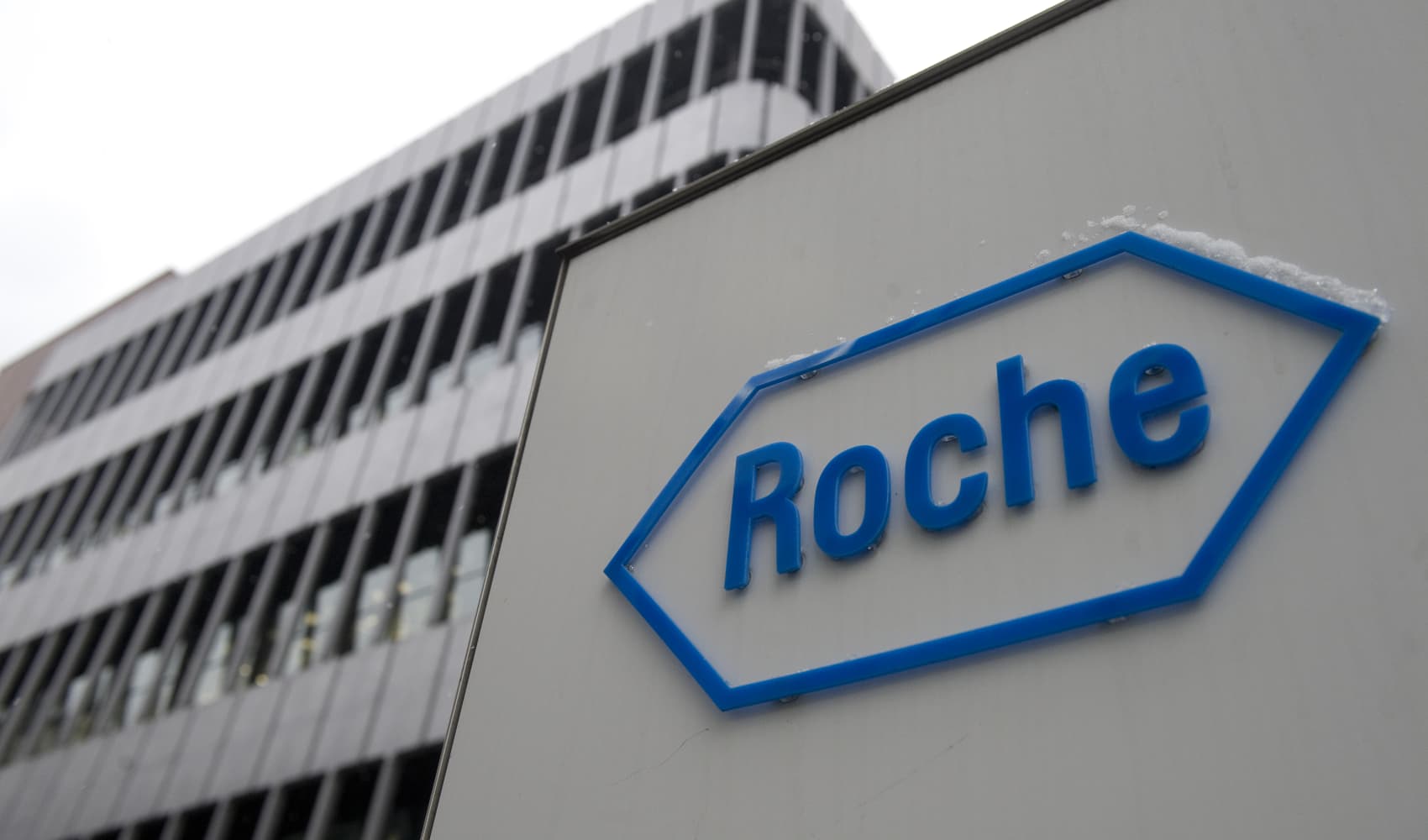Roche's $50B US Pharma Investment: Is It Tariff Protection?
Roche's $50 Billion U.S. Bet: Shielding Pharma from Tariff Storm?
Introduction: A Pharma Powerhouse Doubles Down on America
Hold on to your hats, folks! Swiss pharmaceutical titan Roche just dropped a bombshell: a whopping $50 billion investment in the United States over the next five years. That's right, $50 billion. But why now? Is it just a coincidence that this massive injection of capital comes amidst growing concerns about potential tariffs on pharmaceutical goods imported into the U.S.? Or is there more to the story? Let's dive in and explore the implications of this monumental move.
The Elephant in the Room: Tariff Threats Looming
Trump's Tariff Talk: A Pharma Earthquake?
Remember when President Trump floated the idea of slapping tariffs on pharmaceutical imports? That sent shivers down the spines of pharma executives worldwide. Pharmaceutical companies have been scrambling to fortify their presence within U.S. borders ever since. Why? Because tariffs can drastically increase the cost of imported drugs, potentially impacting patient access and company profits.
Dodging the Tariff Bullet: Is Onshoring the Answer?
Could this massive investment be Roche's way of preemptively shielding itself from the potential fallout of those tariffs? It certainly seems plausible. By significantly expanding its U.S. manufacturing capabilities, Roche can reduce its reliance on imported goods and potentially mitigate the impact of future tariffs. Think of it as building a fortress against the storm.
Roche's Grand Plan: Investing in American Innovation
More Than Just Jobs: A Commitment to Growth
This isn't just about avoiding tariffs; it's about investing in American innovation. Roche's CEO, Thomas Schinecker, emphasized the company's "long-standing commitment to research, development and manufacturing in the US." This investment signals a strong belief in the future of the U.S. as a hub for pharmaceutical innovation.
12,000 New Jobs: A Boost to the U.S. Economy
The investment promises to create over 12,000 jobs, including 1,000 directly with Roche and the rest supporting new U.S. manufacturing capabilities. That's a significant boost to the U.S. economy, providing opportunities for skilled workers and stimulating economic growth. Can you imagine the ripple effect this will have on local communities?
Beyond the Numbers: What's Roche Really Up To?
Expanding Research and Development: Innovation on the Horizon
While manufacturing is a key component, don't underestimate the importance of research and development. Roche is likely to funnel a significant portion of this investment into expanding its R&D efforts in the U.S., leading to potential breakthroughs in drug discovery and development. This could translate to new treatments and therapies for a wide range of diseases.
Strengthening Supply Chains: A Resilient Pharma Ecosystem
The COVID-19 pandemic exposed vulnerabilities in global supply chains. By investing in U.S. manufacturing, Roche is also strengthening its supply chains, making them more resilient to disruptions. This is crucial for ensuring a stable supply of essential medicines for American patients.
Roche's Existing U.S. Footprint: Building on a Strong Foundation
A Long History in America: More Than Just a New Investment
Roche already has a substantial presence in the U.S. The company already employs a significant number of people across various divisions in the United States. This new investment builds upon that existing foundation, further solidifying Roche's commitment to the U.S. market.
Genentech: A Flagship U.S. Acquisition
Remember Genentech? Roche acquired the South San Francisco-based biotech giant back in 2009. This acquisition has been a cornerstone of Roche's U.S. operations, giving them a leading position in biologics and biotechnology. This latest investment likely leverages the expertise and infrastructure already in place at Genentech.
The Competitive Landscape: Roche vs. Its Rivals
Staying Ahead of the Curve: A Race for Market Share
The pharmaceutical industry is fiercely competitive. Roche's investment is a strategic move to stay ahead of its rivals and capture a larger share of the U.S. market. By expanding its manufacturing and R&D capabilities, Roche is positioning itself for long-term growth and success.
Following Suit? Will Others Follow Roche's Lead?
Will other pharmaceutical companies follow Roche's lead and make similar investments in the U.S.? It's certainly possible. The threat of tariffs, coupled with the potential for economic growth and innovation in the U.S., could incentivize other companies to expand their U.S. presence.
The Political Implications: A Win-Win for Both Sides?
A Positive Signal: Reassuring the U.S. Government
This investment sends a positive signal to the U.S. government, demonstrating Roche's commitment to the American economy. It could potentially ease concerns about tariffs and foster a more collaborative relationship between Roche and U.S. policymakers.
Job Creation and Economic Growth: A Political Boon
The creation of 12,000 new jobs is a political boon for any administration. It allows policymakers to tout the success of their economic policies and demonstrate their commitment to job creation. This investment could strengthen Roche's standing with U.S. political leaders.
The Patient Perspective: What Does This Mean for You?
Access to Medicines: Ensuring a Stable Supply
For patients, this investment could translate to a more stable and reliable supply of essential medicines. By expanding its U.S. manufacturing capabilities, Roche is reducing its reliance on foreign sources and ensuring that patients have access to the treatments they need.
Innovation and New Therapies: Hope for the Future
The investment in R&D could lead to the development of new and innovative therapies for a wide range of diseases. This offers hope for patients who are currently suffering from conditions with limited treatment options. This could mean a better quality of life and improved health outcomes for millions of Americans.
Long-Term Impact: A Lasting Legacy?
A Transformative Investment: Shaping the Future of Pharma
Roche's $50 billion investment has the potential to transform the U.S. pharmaceutical landscape. It could spur innovation, create jobs, and strengthen the U.S. economy. Only time will tell the full extent of its impact, but it's clear that this is a significant moment for the pharmaceutical industry.
A New Era of U.S. Pharma Manufacturing: Reshoring and Resilience
We might be witnessing the start of a new era of pharmaceutical manufacturing in the U.S., characterized by reshoring and a greater focus on supply chain resilience. This could lead to a more secure and robust pharmaceutical ecosystem for the country.
Conclusion: A Bold Move with Far-Reaching Consequences
In conclusion, Roche's $50 billion investment in the U.S. is a bold move with far-reaching consequences. While the threat of tariffs undoubtedly played a role, the investment also reflects Roche's long-term commitment to innovation and growth in the U.S. This could create thousands of jobs, stimulate the economy, and lead to the development of new and life-saving therapies. It's a win-win for Roche, the U.S. economy, and ultimately, American patients. What’s next for the pharma industry and America? Only time will tell!
Frequently Asked Questions
- Why is Roche investing so much money in the U.S.?
Roche is investing $50 billion in the U.S. over the next five years to expand its manufacturing and research & development capabilities. This investment is partially driven by concerns about potential tariffs on pharmaceutical imports but also reflects Roche's long-term commitment to the U.S. market and its belief in American innovation. - How many jobs will this investment create?
Roche estimates that the investment will create over 12,000 jobs in the U.S., including 1,000 directly with the company and the remainder supporting new U.S. manufacturing capabilities. - Will this investment lower the cost of prescription drugs in the U.S.?
While this investment is unlikely to directly lower drug prices in the short term, it could contribute to greater efficiency and innovation in the long run, potentially leading to more affordable treatments. The primary goal of the investment is to increase domestic manufacturing and R&D, which stabilizes supply and drives advancement. - How does this investment affect Roche's global strategy?
This investment strengthens Roche's position in the U.S., which is a major pharmaceutical market. It diversifies Roche's manufacturing base and reduces its reliance on foreign suppliers, making its global operations more resilient. - What specific areas of research and development will Roche focus on with this investment?
While the specific areas haven't been explicitly stated, it is likely that Roche will focus on areas where they already have a strong presence, such as oncology, immunology, and infectious diseases. The investment will likely be used to advance ongoing research and development programs and to explore new areas of therapeutic innovation.

